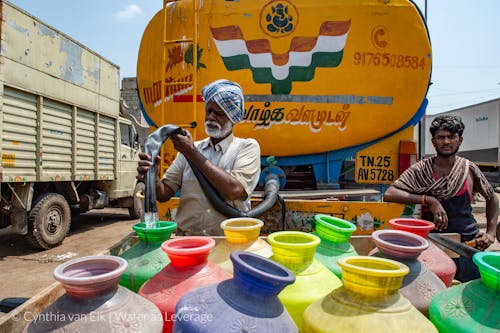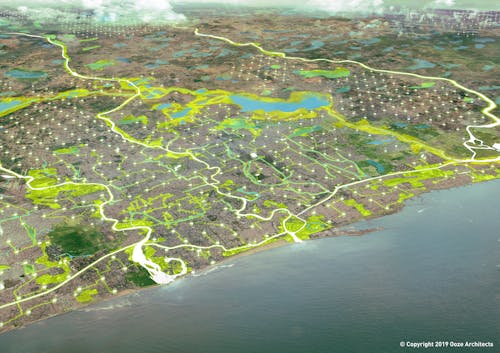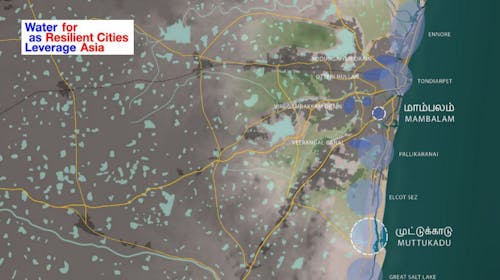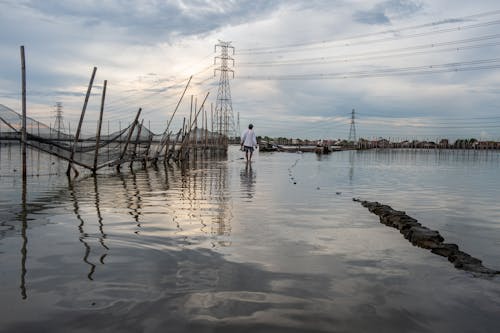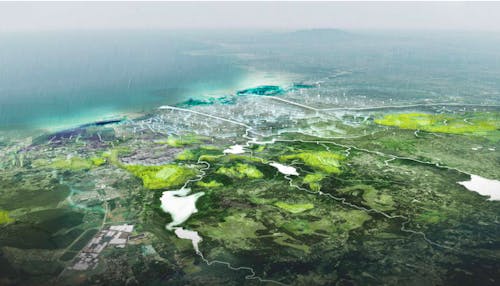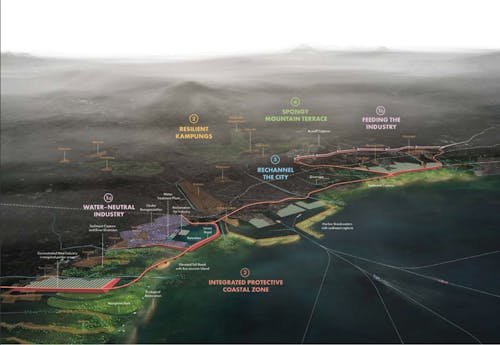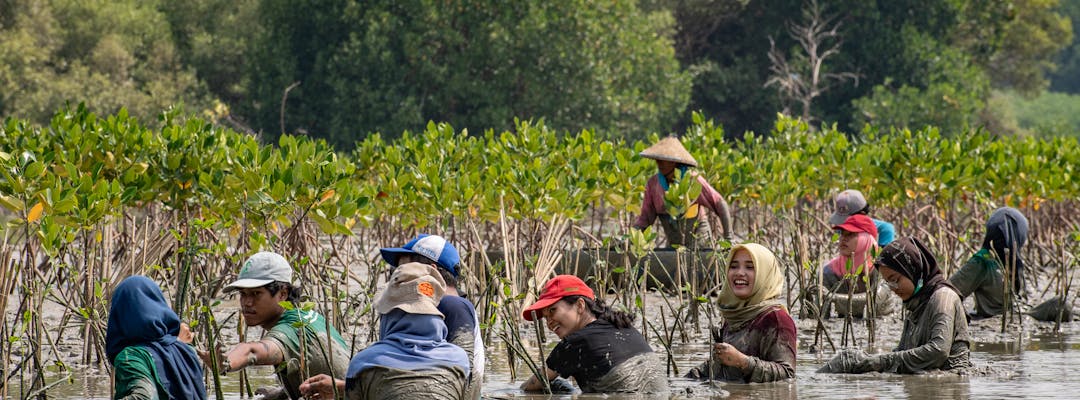

Water as Leverage Asia: Chennai - Khulna - Semarang
Water as Leverage Asia
The three cities where Water as Leverage started pilot a transformative design approach with a view to replicating its principles in Asia and the rest of the world. The initiative involves a dedicated group of partners from governments, financial institutions, investors, experts and innovators and community stakeholders committed to the aim of using Water as Leverage as a blueprint for other cities and regions facing water challenges.
See more:
Setting the Scene for a Call for Action: extensive research-based document that narrows down from water-related challenges on a global level towards why we chose for the three cities in the first edition of WaL – Chennai, Khulna and Semarang. This document and its sources also provided a head start to the interested teams and generated a level playing field in terms of knowledge availability.
The city specific trailer:
Chennai
Chennai is the capital of the Indian state of Tamil Nadu, located on the southeastern coast of India. Recent immigration has made Chennai the fifth most populous metropolitan area in India.
As a consequence, informal peripheral settlements in low-lying coastal areas that lack access to infrastructure and services house many of the recent arrivals. This rapid increase of population also affects the expansion of impermeable soil and failure of the drainage system. Chennai’s position on the southern coast of India, which suffers from land subsidence, makes the region extremely vulnerable to flooding and landslides.
Want to know more about Chennai and its various challenges, read this [City Report] (https://drive.google.com/file/d/1jNbuCr24ZKz1yhaL71UmN7pdNnqDC3_Q/preview) or see the stories below
For even more information, see the Wal Chennai Library
Chennai: Vulnerable to Flooding
A New Sponge City
Located in the heart of the Eastern African Rift Valley, Nakuru City is distinguished by its unique landscape and climate. Positioned at an altitude of 1,850 meters above sea level, the city enjoys a moderate climate despite being near the equator. The active volcanic ridge line near Nakuru hosts unique ecosystems and offers high potential for geothermal sources. The city's central area is nestled between the Menengai Crater and Nakuru Lake, while the eastern and western edges are more rural. Rapid urbanization is transforming agricultural fields and forest slopes into built-up areas, leading to increased high-velocity rainwater runoff toward the city center.
Water as Leverage Nakuru (WaL Nakuru) aims to enhance the sponge city model and employ Nature-Based Solutions (NBS) as design tools to address water and climate challenges. The sponge city model captures and retains water during rainy seasons, ensuring water security during dry periods. NBS protect, sustainably manage, and restore natural and modified ecosystems, benefiting both people and nature. In Nakuru, small-scale sponge city technical solutions, such as runoff water systems and tanks, are being implemented. These simple yet effective measures not only enhance water safety but also pave the way for larger projects incorporating NBS.
WaL Nakuru proposes innovative combinations of NBS, including parks, plants, afforestation, and greenery restoration, alongside technical solutions such as grey infrastructure, runoff management, and water tanks. Together, these solutions will ensure water safety and contribute to the sustainable development of Nakuru.
Let's make Nakuru a model for sustainable urban water management and climate resilience! 💧🌱
Want to learn more about Khulna and it's WaL project, this Setting the Scene gives a great overview.
Please go to the Nakuru Library for more information!
Stories of Nakuru
The Largest City of Java
Semarang is a harbour city in the Indonesian archipelago with a dynamic shoreline, stemming from natural sedimentation processes and man-made extensions.
The city has always faced hazards such as drought, land subsidence, landslides, water pollution, and floods, but these are likely to become more severe and frequent as a result of climate change. This will result in higher surface temperatures, an increased rainfall intensity, rising sea levels, extreme weather patterns, and water pollution, creating income fragility, decreased food availability, and migration.
Interested in reading more about Semarang, read the City Report of Semarang
For more information, please also visit the Semarang Library
